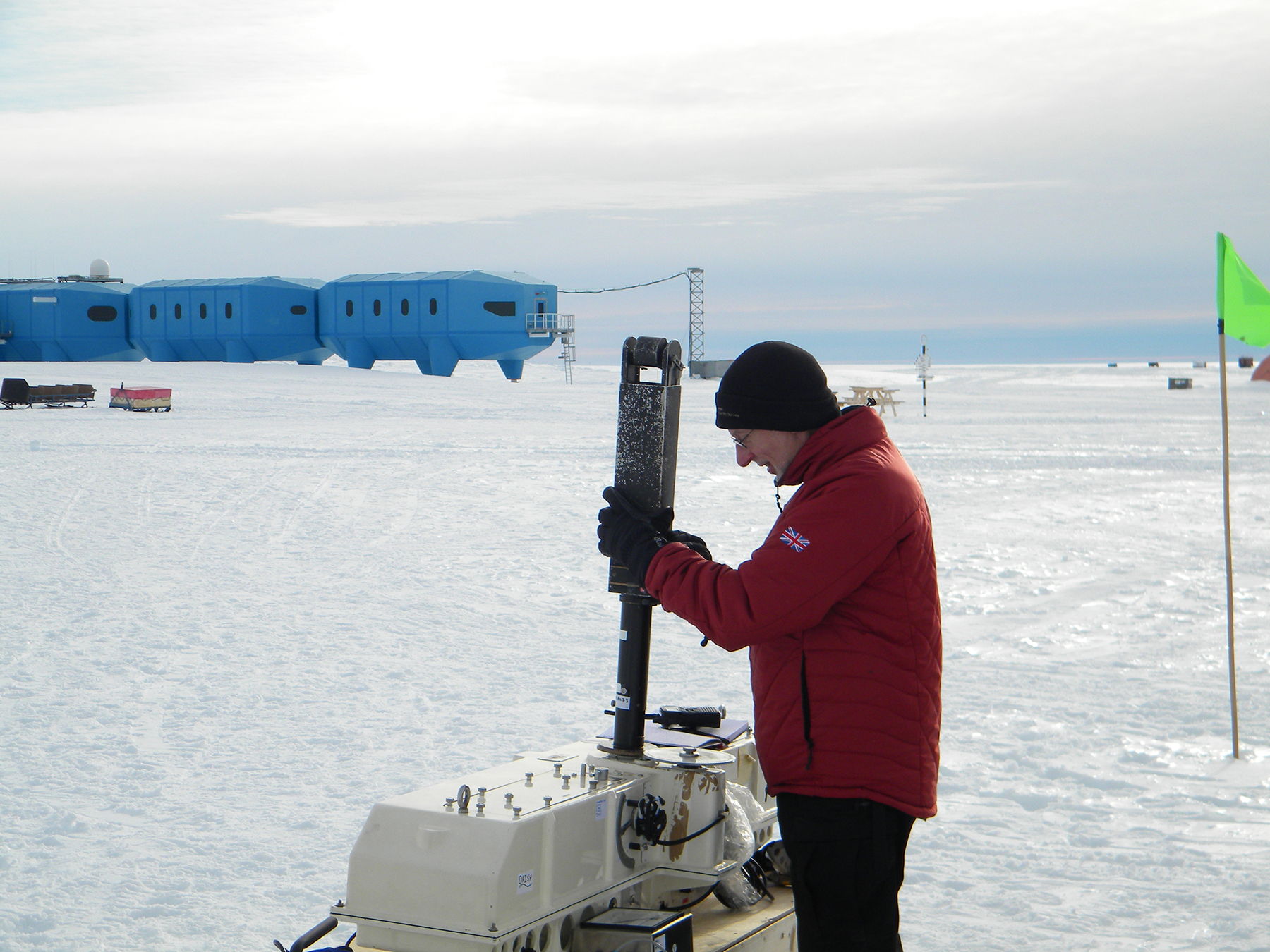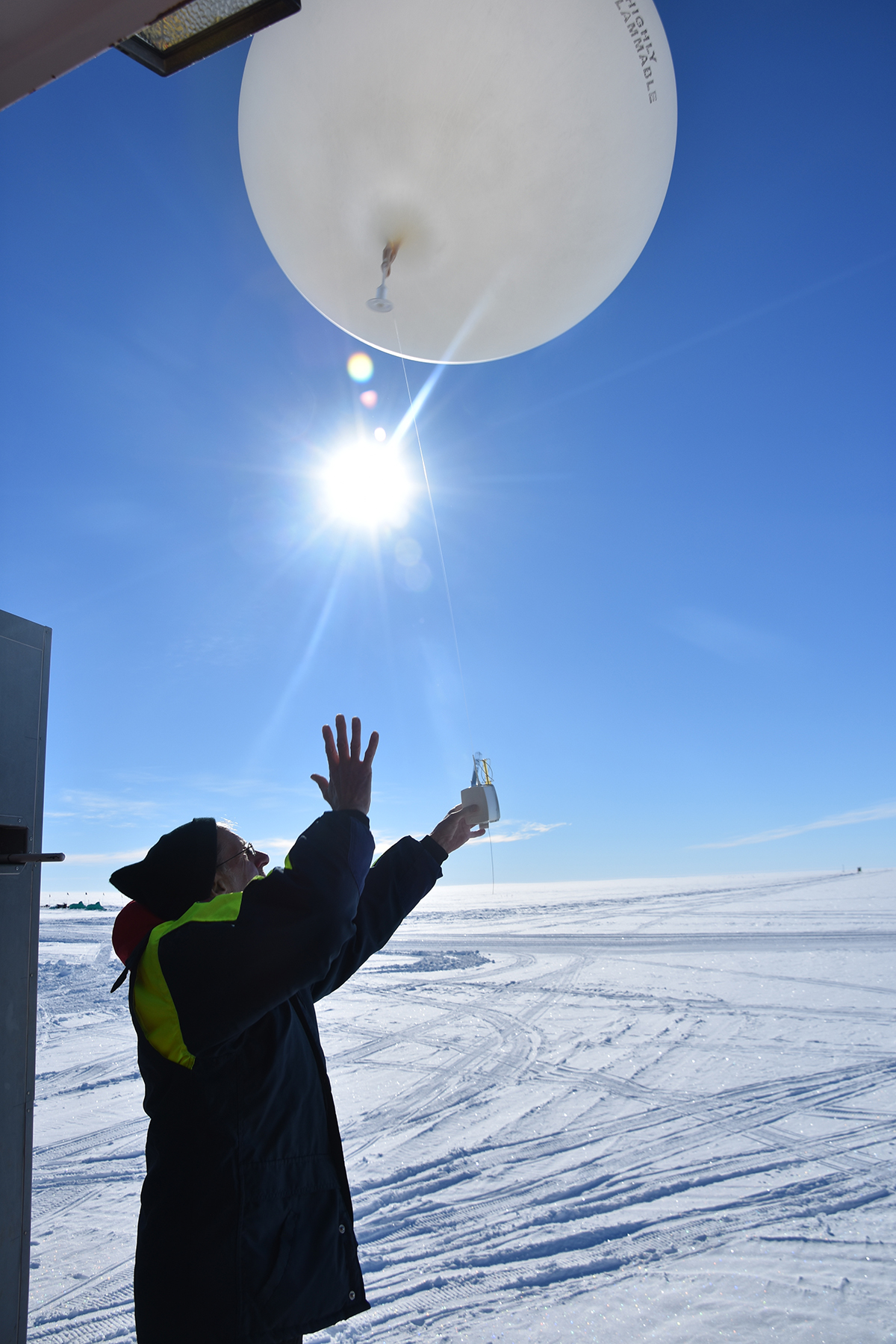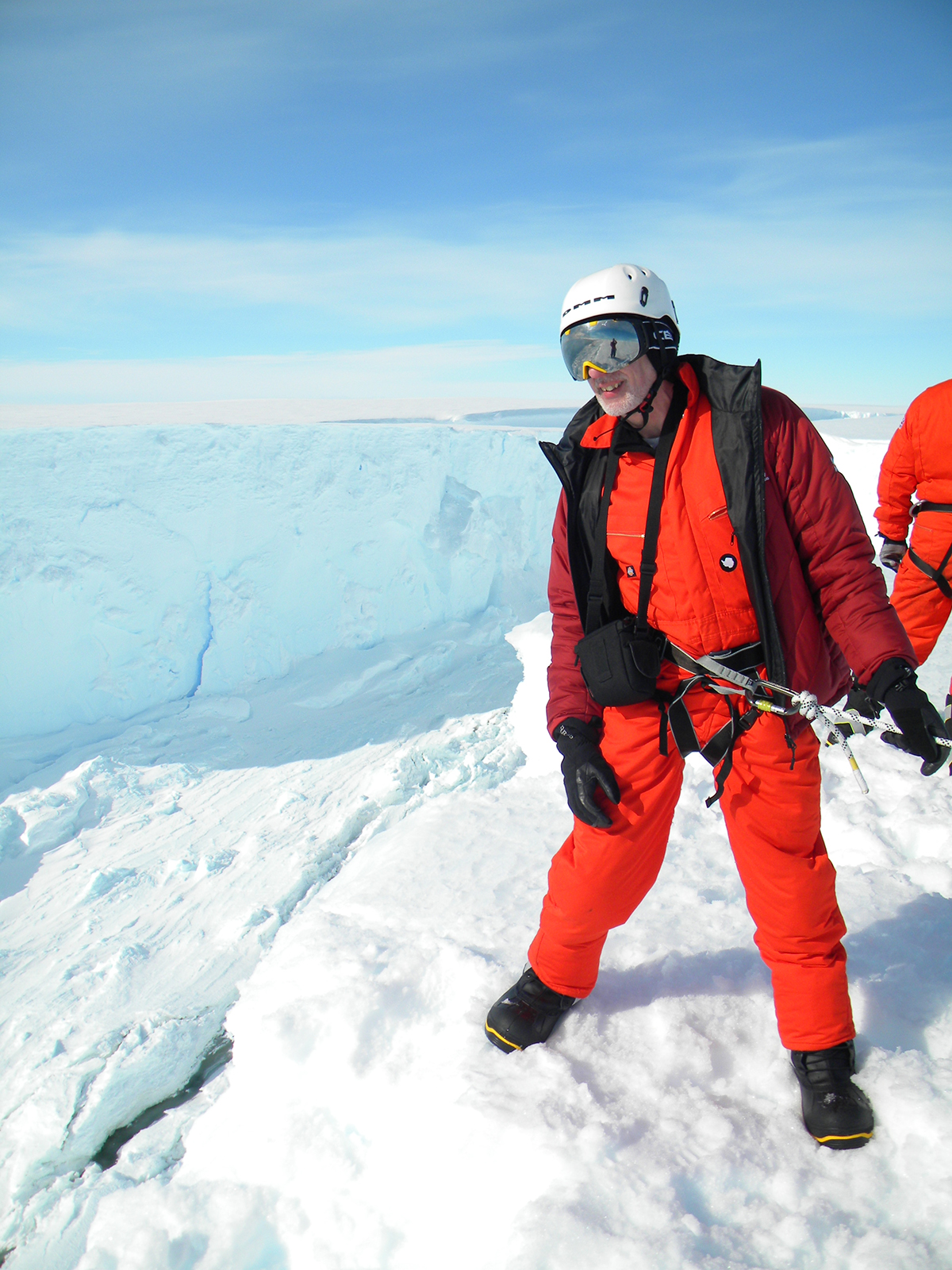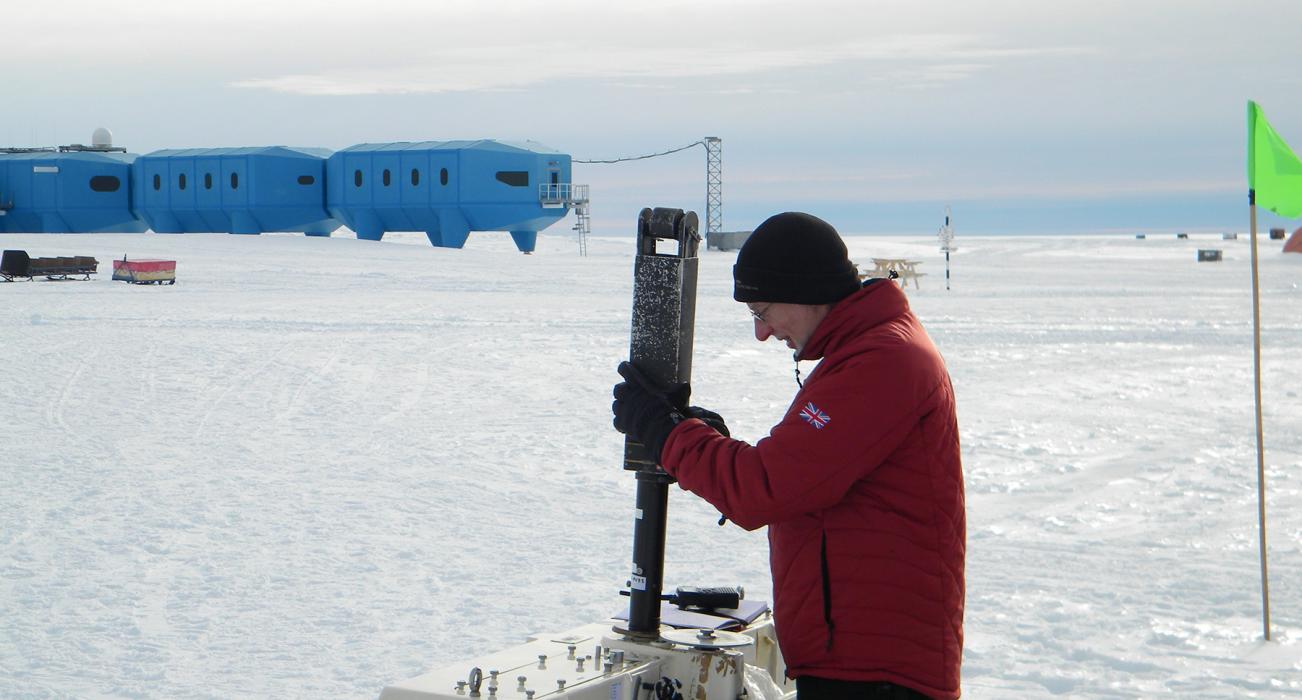Discovering the Hole in The Ozone Layer
In 1973, the College accepted me as a Natural Sciences student and my courses at the Cavendish and tuition at Magdalene instilled in me the skills of an experimental physicist. I had originally wanted to be an astronomer, but my maths wasn’t good enough. Teaching was an option; I learnt the techniques doing a PGCE and these proved useful later on. An advert for the British Antarctic Survey (BAS) for a physicist looked interesting as I ticked all the boxes, so I applied and was delighted to be offered the post.
As with many jobs, the early years were relatively mundane. The post was based in Cambridge and essentially involved quality control of various meteorological data coming back from the Antarctic. These included measurements of energy from the Sun, and ozone and weather observations. The weather observations were difficult to check without experience of the conditions and this was one lever for requesting a visit to the Antarctic. The main lever, however, was a replacement ozone measuring instrument that BAS was purchasing and which I was to take to the Antarctic to compare against the existing instrument.
I departed Cambridge in December 1981, spent Christmas in the Falklands, New Year at South Georgia and then on to Halley Research Station in January. The comparison went well and confirmed that the existing instrument was operating correctly. I then managed to persuade BAS that I should visit the other Antarctic stations, so was still there in March 1982. The Falklands War prolonged my return journey and we eventually docked in Southampton just before the Queen Elizabeth 2 sailed. She covered in just ten days the distance that had taken us a month of steady steaming!

One of the key reasons for wanting to check on the ozone measurements was that they seemed to be getting lower in the spring. The question was whether this was a real phenomenon or an instrumental or computational artefact. The fact that the two instruments agreed and that the decline only occurred during the Antarctic spring left a change in the atmosphere as the most likely cause for the effect. At the time there had been concern that the release of chlorofluorocarbons (CFCs, which were used in fridges and aerosol cans) into the atmosphere might affect the ozone layer. The prevailing scientific theory suggested that this depletion would occur over the tropics at very high altitude. My bosses, Joe Farman and Brian Gardener, added a possible theoretical explanation for the observations and the paper was published in Nature in 1985.

Our discovery that changes linked to CFCs were taking place over Antarctica rather upset the apple cart! NASA arranged for flights of a U2 spy-plane converted for research to take measurements between South America and the Antarctic Peninsula. These clearly showed that chlorine chemistry was the key factor in the ozone depletion, permitting destruction at heights of around 18km. The unusual conditions of the Antarctic winter allow temperatures to drop so low that clouds can form in the middle of the ozone layer – when illuminated by the sun they show iridescent colours leading to their common name of mother-of-pearl Clouds. What nobody had realised was that chemistry could then take place on the cloud surfaces which, when combined with spring sunshine, would destroy ozone at about 1% per day. Eventually as the atmosphere warms in late spring, the clouds disappear and ozone depletion ceases until the cycle repeats the following winter.
The discovery led to the signing of the Montreal Protocol, the international treaty that prohibits the release into the atmosphere of substances that can affect the ozone layer. All the UN Member States have now signed the Treaty (a unique achievement) and it is working: the amount of the controlled substances in the atmosphere is going down. There is still monitoring work do be done – evidence shows that there has been illegal manufacture of CFCs – and new substances that can affect the ozone layer are always being designed.

One early recognition of the discovery was an appearance on Blue Peter and the award of a green badge! This was one of many occasions when my teaching skills proved useful, and they are still used in outreach talks in schools and other public events. A link with the Cavendish continues with their Physics at Work event every September, providing outreach to around 2,000 school pupils. The Institute of Physics awarded me their Charles Chree Medal in 2000 and, in 2005, I was proud to receive the Polar Medal from Her Majesty at Buckingham Palace. A very unusual honour came in 2020, when the Antarctic Place Names Committee named the Shanklin Glacier at the south end of the Antarctic Peninsula.
I formally retired from the British Antarctic Survey in 2012, but remained as an Emeritus Fellow. Much to my delight, I was called out of retirement in 2018 to go to Halley as a meteorological observer for my 20th Antarctic journey. As with my first trip, this also involved making manual ozone observations and comparing them with an instrument that was to run automatically through the polar winter. That instrument is running today and giving information about what has been the largest ozone hole for over a decade. This does not imply a failure of the Montreal Protocol, just that weather conditions at altitude play a significant part in the formation of the ozone hole.
Outside my professional career, I continued with my astronomical interests, directing amateur observations of comets for the British Astronomical Association and serving as Senior Treasurer of the University Astronomical Society. More recently, I have resumed an interest in botany, begun when I was at primary school and am now the Botanical Society Vicecounty Recorder for Cambridgeshire. In this role, I visited the College grounds throughout 2019 and a report on the results appears in the College Magazine.
By Dr Jonathan Shanklin (1973)
This article was first published in Magdalene Matters Spring/Summer 2021 Issue 51.
